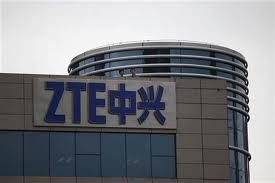  ZTE Corporation, on Wednesday announced a breakthrough in 5G research, with the company’s new Multi-User Shared Access (MUSA) technology demonstrating the capability to more than triple overload capacity of wireless access networks.
Based on the simulation results, ZTE’s MUSA algorithm delivered an over 200% improvement in the overload radio, helping to transition networks for the era of the Internet of Things. MUSA is one of ZTE’s industry-leading research projects on Pre5G, which use 5G-ready technologies to provide commercial 4G LTE end users with 5G-like access experience. Other Pre5G technologies developed by ZTE include Massive MIMO, and Ultra-Dense Network (UDN). ZTE expects its Pre5G technologies will be commercially deployed in 2015.
“The validation of MUSA and UDN technologies further enhances the Pre5G solutions. The Pre5G solution will help operators exponentially enhance the access rate and overall network capacity by leveraging existing resources in the next 3–5 years. Before standardization of 5G technologies, this solution can effectively mitigate the challenges of data traffic surge, and help operators seize market opportunities and achieve better business development," said Xiang Jiying, Chief Scientist of ZTE.
ZTE also successfully tested its Pre5G UDN solution, which makes full use of the sophisticated Pico RRU hardware platform and Cloud Radio interference cancellation technology, allowing for denser deployment of base stations for operators to gain higher capacity density.
By leveraging the power differentials of transmitters (near-far effect), ZTE’s MUSA uses non-orthogonal complex spreading sequences at the transmitter side for modulation, and uses successive interference cancellation at the receiver side to remove the interference and recover the user data. This allows multiple users to transmit at the same time and frequency.The system capacity is thereby significantly improved in the strong near-far effect situation.
ZTE has been focusing on the core demands of mobile operators over the time horizon of the next three to five years, taking the lead in proposing the Pre5G concept.
ZTE’s Massive MIMO, which completed a successful pre-commercial test in 2014 jointly conducted with China Mobile, is recognized as one of the key 5G technologies. Massive MIMO sharply improves spectral efficiency, and helps operators make full use of existing sites and spectrum resources, significantly enhancing wireless network coverage and capacity.
In March 2015, ZTE officially released a Pre5G base station integrating the BBU, RRU and antenna, and demonstrated the service flow together with China Mobile at the Mobile World Congress (MWC) 2015 in Barcelona. At the NGMN Industry Conference and Exhibition held in Frankfurt, Germany in the same month, ZTE was included in Deutsche Telekom's initial list of 5G Innovation Lab partners. |